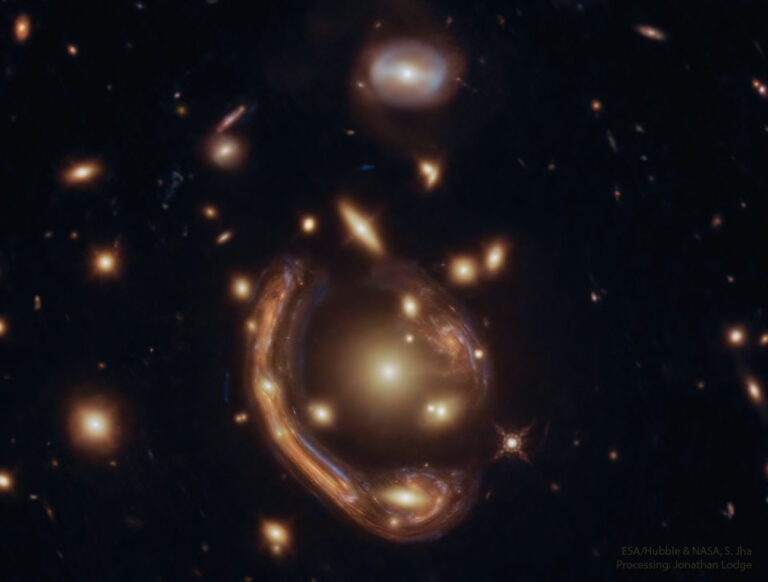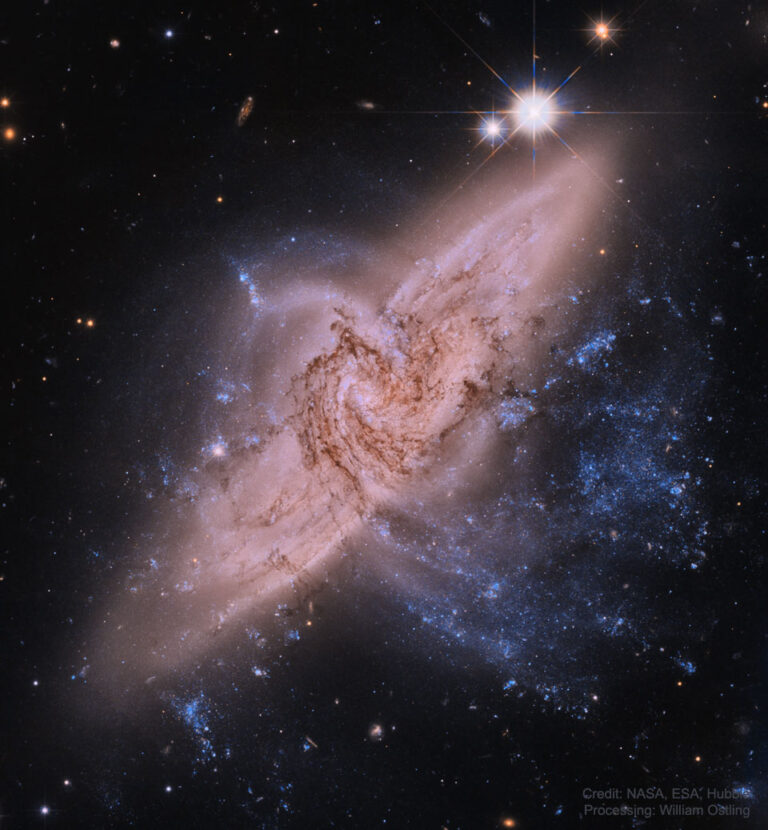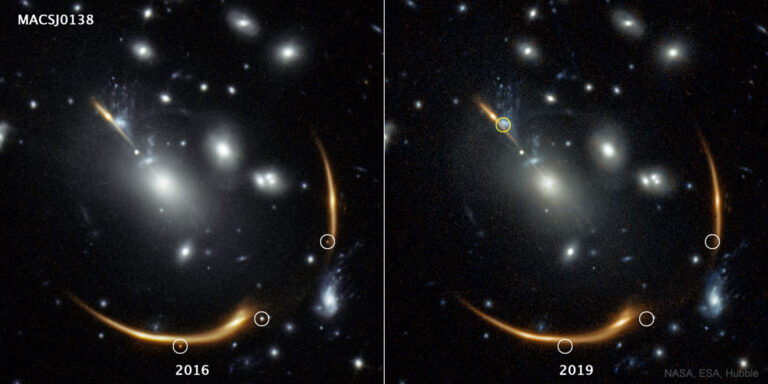2023年6月9日 Pandora’s Cluster of Galaxies Image Credit: NASA, ESA, CSA, Ivo Labbe (Swinburne), Rachel Bezanson (University of Pittsburgh), Processing: Alyssa Pagan (STScI) Explanation: This deep field mosaicked image presents a stunning view of galaxy cluster Abell 2744 from the James Webb Space Telescope’s NIRCam. Also dubbed Pandora’s Cluster, Abell 2744 itself appears to be a ponderous merger of three different massive galaxy clusters some 3.5 billion light-years away toward the constellation Sculptor. Dominated by dark matter, the mega-cluster warps and distorts the fabric of spacetime, gravitationally lensing even more distant objects. Redder than the Pandora cluster galaxies many of the lensed sources are very distant galaxies in the early Universe, stretched and distorted into arcs. Of course distinctive diffraction spikes mark foreground Milky Way stars….







